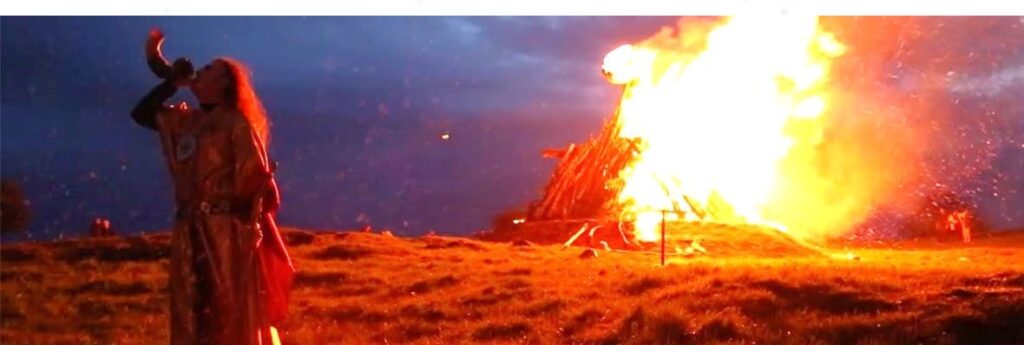It’s Halloween and perhaps you’re wearing something kooky (or horrifying) at work today (someone we know has taped on dozens of grey paint samples – “50 shades of grey”) or preparing for the night’s trick or treating; but Tourism Ireland is taking the occasion to remind one and all where the horrific holiday all began: Celtic Ireland.
Indeed, points out the tourist board, some of the most popular customs and traditions of All Hallows’ Eve originated in the Emerald Isle and can be traced back to the Celtic festival of Samhain, a great celebration of fire and feasting that marked the end of the season of light and the beginning of the dark days of winter.
At this moment of transition, the ancient Celts believed there was an interaction between the worlds of the living and the dead and that spirits could move between them. Fearing that all manner of beings might pull them into the otherworld before their time, the Celts would disguise themselves in costumes to confuse and scare off the roaming ghosts, fairies, hobgoblins, and demons.
The modern practice of dressing up at Halloween is firmly rooted in these old pre-Christian customs, as is the tradition of lighting bonfires, which began on hilltops in Ireland with clans and communities gathering to light huge ceremonial Samhain fires.
One of the biggest Celtic festivals of fire was at the peak of Tlachtga, or the Hill of Ward in present day County Meath. Recent archaeological excavations suggest the hill was used for feasting and celebration over 2,000 years ago and old manuscripts reveal that the Celts lit a fire there from which all the fires in Ireland were rekindled.
To this day the area around the Hill of Ward, and the nearby Hill of Tara where the High Kings of Ireland ruled, remains one of the centres of Irish Halloween traditions. The Púca Festival, a 21st-century Samhain celebration, is held in County Meath and neighbouring County Louth every year.
Celebrating Ireland as the birthplace of Halloween, Púca events include an impressive re-enactment of the symbolic lighting of the Samhain fire, live music and performance, amazing light installations and more.
Jack-o’-lanterns
Lit-up pumpkins with ghoulish faces is another much-loved aspect of Halloween. The practice of carving them began in Ireland, where turnips and large potatoes served as the original Jack-o’-lanterns.
In fact, the name of the Halloween decoration comes from an Irish folktale about a man named Stingy Jack who played a trick on the Devil. As a punishment for his trickery, the Devil doomed Jack to wander eternity with only a burning ember from the everlasting fires of Hell inside a turnip to light his way.
Traditions
Irish immigrants eventually brought the tradition to North America, home of the pumpkin, and the winter squash has now become integral to the Halloween festivities.
Trick or treating is another Halloween tradition originating in Ireland, in this case with children and the poor going from door to door to ask for food, kindling or money. They sang songs or offered prayers for the soul of the dead in return for food, usually a soul cake which was a flattened bread that contained fruit. This tradition was known as ‘souling.’
The custom of dressing in costumes and making house visits to request small presents of sweets, fruit and money is alive and well in Ireland today, and in many other countries around the world.

